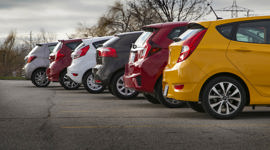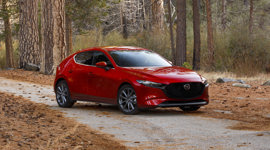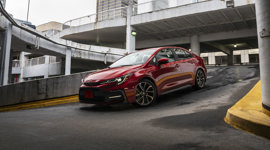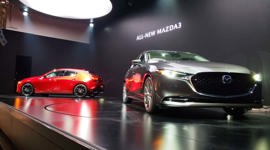Car design stands in contrast to automotive engineering. Engineers value elements that are practical, efficient, and precise; designers, on the other hand, are concerned with creating a visual impact. At the award-winning design studios of Mazda, car design is even more abstract than that.
“When it comes to designing a vehicle, we want someone to feel something,” says Julien Montousse, Senior Director of Design at Mazda North America. “[But] we want our designers to feel that emotion before they start putting the pen down.”
As cryptic as that sounds, it gets results. The Mazda3 recently earned the World Car Design of the Year award, a significant feat considering that the award was given to a luxury vehicle seven times in the previous 10 years. In the other three years, the winners were the sporty (but niche) Mazda MX-5, the quirky Citroen C4 Cactus, and the aggressive-looking Chevrolet Camaro.

Tapping into Emotion
To get its artists ready to sketch and create their award-winning designs, Mazda puts them through a process meant to help them get in touch with their emotions. Montousse tells designers to be prepared. “[We] put you in a chamber to let you grow your capability to feel.” He tells new recruits to the team that this process can take time, and that they shouldn’t expect to start designing things for the company right away.
One way they get designers to feel is to show them photos. He presents an example from the team’s pool of 200 to 500 images, of someone diving into a dark body of water. Montousse describes various emotions he feels when considering this image: he thinks about the diver, and how there’s a thrill to jumping into the water, a fear of hitting your head in a shallow pool, the exhilaration of gliding through the air and water, and finally a feeling of well-being for when they successfully complete the dive. “These are very strong emotions that we want designers to feel before they start designing,” he says.

This is all part of Mazda’s efforts to put emotion at the forefront of its design, and this process takes place with every new vehicle. To focus their efforts, they narrow down the set of evocative, inspirational images down to about five or 10 per vehicle.
Another way to get in touch with their emotions is through trips and adventures. The Mazda America Design team is based in Southern California, so some team members go out surfing together early in the morning, while new additions to the team from Japan are urged to learn how to swim or surf. The team even goes out on days-long trips to meditate on the brand. Montousse says this bonding creates positive energy among the designers, so they bring that emotion into the design process.

Emotional experiences are drawn out in other ways as well, like with food. “We all love food in the studio and one designer is even a chef,” Montousse says. “She makes amazing dishes for the studio, and we have a group tasting session.” Physiologically, food can be a very strong emotional trigger – the delight of a decadent treat, the nostalgia of a comforting dish, or the satisfaction of a sumptuous supper.
Montousse mentions that his HR department may question his methods, but he is adamant that having designers who are in tune with their emotions is the only way for those emotions to be expressed in their work. “We want our customers to feel an emotion,” which can only be done if the designers can feel it too.
He explained that each car is given an “emotional quote,” which is sometimes a challenge, and other times much easier. For the MX-5 the emotion was “seduction,” while the CX-9 was described as “alluring prestige.”

A Reflection of Life
But those vehicles are from an older design language and are distinctly different from the newer Mazda3, CX-30, and upcoming MX-30. Speaking almost in riddle now, Montousse says that the design should be “an expression of life around the vehicle.” The current design philosophy follows the idea of “Car as Art.”
“Pushing the design to an artistic level is where we feel that we can make the biggest impact from an emotional standpoint,” he says. Art is known to spur emotional responses, from vivid realist art, to impressionist art, to organic abstraction.
He tells designers to “Look at the space around the product,” adding that this mindset is “very abstract, especially for new designers, who are used to looking at details.” That space around the product is full of light, shadows, and reflections.

As a result, the Mazda3 and CX-30 follow a minimalist approach with few body lines. Instead, the shape of the vehicle is accented by the way the paint reflects the vehicle’s surroundings. With the Mazda3, the reflections in the paint create a line that flows from the nose of the car, over the front wheel, and then into the rear wheel. This is meant to exude a sportier profile than the CX-30. The reflections in the paint of the small crossover start at the front fender and then spread to the rear fenders and roofline, stretching the shadows to make the CX-30 appear larger than it is.
This design language and philosophy has another, subconscious impact. “When you’re walking around a vehicle and saying, ‘Wow this car is stunning,’ it is not something that we are psychologically aware of.” Due to the lack of lines and graphics in the body of the car, Montousse says you don’t make the connection as to why that car is beautiful – it doesn’t matter. “All we want is [for] your inner self to connect to the beauty of the car.”
He says this is achieved by showing how the environment is moving around the car, through reflections in the paint. “We want those reflections to be as uninterrupted as possible in order to provide the beauty,” he says.

Abstract Thinking vs the Competition
While design and emotion typically go together, different brands have different approaches to eliciting such emotion – and targeting their audience.
Typically, a vehicle is styled a certain way to make a statement about the owner, the brand, or the designer. “We want you to feel the handprint of the artist,” said Alfonso Albaisa, Infiniti’s Executive Design Director, back in 2015.
“When we have our car, we tend to use it because it gives everybody who sees it an impression of who we are or who we want to be,” said Giorgetto Giugiaro, the man behind such iconic designs as the original Maserati Ghibli, Lotus Esprit, BMW M1, and DeLorean. “We are a lawyer, we are a doctor, we are an engineer, and what this exterior iconic view gives is the sensation of us.”

Earlier this year, Luc Donckerwolke, former Chief Design Officer and Executive Vice President at Hyundai Motor Company, expressed that Genesis’ design is a by-product of its diversity. Through collaboration and competition with its studios across the world, they feel confident in their presentation of “young luxury.”
“We are not looking to make an impact on our customer from a graphics perspective,” Montousse says, comparing the emotionally charged design of Mazda to the use of graphics and design trends in competing brands like Honda and Toyota. “Those designs tend to be impactful, but temporary, because it looks fresh for about a year or two,” he says.
We’ve all been blown away in the past by some in-your-face-designs, like BMW’s large grilles, Lamborghini’s sharp angles and harsh body lines, or Cadillac and Ford’s robotic, squared-off designs. “We want to show something that will be more timeless, and using our emotions and the natural elements of light and dark showcases this.”
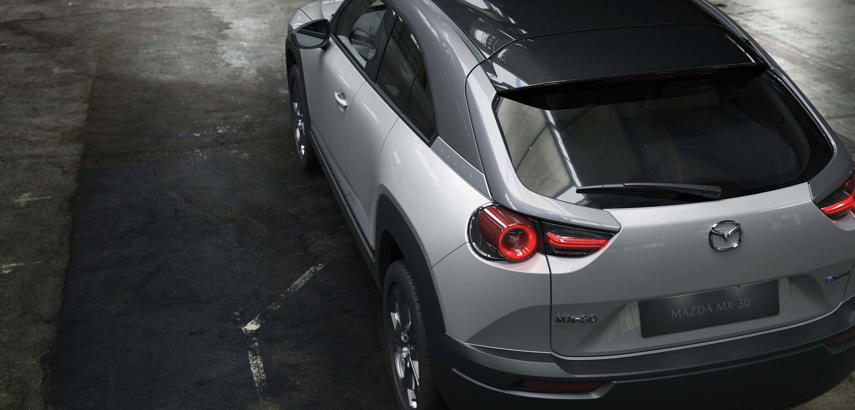
Montousse feels that Mazda’s approach is probably the first time it’s been attempted by an automaker. Fortunately, he has the blessing of his engineering team. “We work very well together,” he says about the design team’s relationship to the engineering department. “We have an equal say in our relationship, and it’s not combative, compared to other manufacturers.” He adds that the teams co-create and work together in the same building to reach the same end goal. “It’s been very constructive, we have the same vision, and it’s been really healthy so far.”
It will be interesting to see if other automakers will begin to follow Mazda’s school of thought when it comes to design. Maybe a few more design awards will lead to that possibility.


